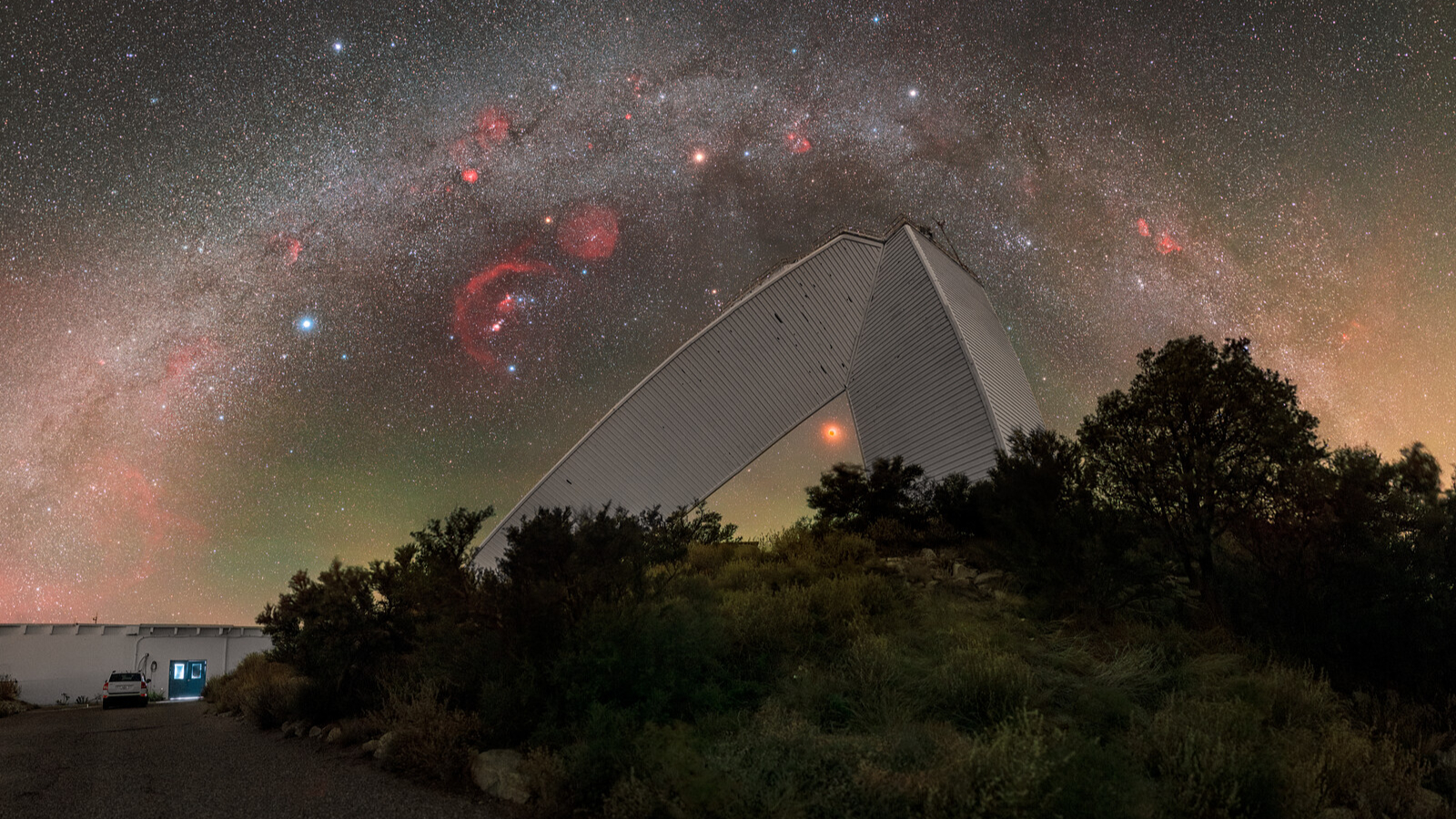The double-slit experiment: Is light a wave or a particle?
The double-slit experiment is universally weird.
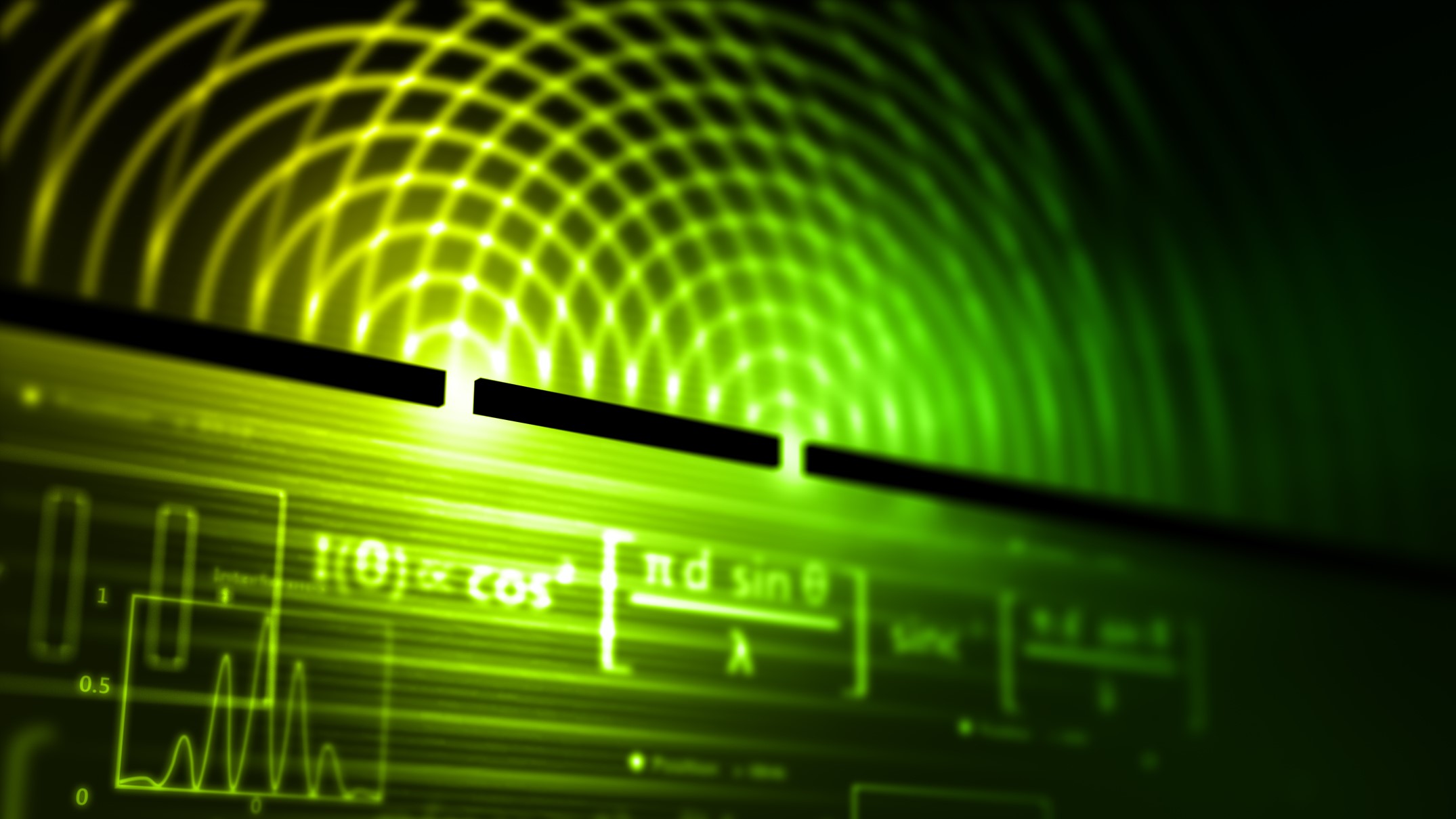
The double-slit experiment is one of the most famous experiments in physics and definitely one of the weirdest. It demonstrates that matter and energy (such as light) can exhibit both wave and particle characteristics — known as the particle-wave duality of matter — depending on the scenario, according to the scientific communication site Interesting Engineering.
According to the University of Sussex, American physicist Richard Feynman referred to this paradox as the central mystery of quantum mechanics.
We know the quantum world is strange, but the two-slit experiment takes things to a whole new level. The experiment has perplexed scientists for over 200 years, ever since the first version was first performed by British scientist Thomas Young in 1801.
Related: 10 mind-boggling things you should know about quantum physics
How does the double-slit experiment work?
Christian Huygens was the first to describe light as traveling in waves whilst Isaac Newton thought light was composed of tiny particles according to Las Cumbres Observatory. But who is right? British polymath Thomas Young designed the double-slit experiment to put these theories to the test.
To appreciate the truly bizarre nature of the double-split experiment we first need to understand how waves and particles act when passing through two slits.
Interference patterns from waves
When Young first carried out the double-split experiment in 1801 he found that light behaved like a wave.
Firstly, if we were to shine a light on a wall with two parallel slits — and for the sake of simplicity, let's say this light has only one wavelength.
As the light passes through the slits, each, in turn, becomes almost like a new source of light. On the far side of the divider, the light from each slit diffracts and overlaps with the light from the other slit, interfering with each other.
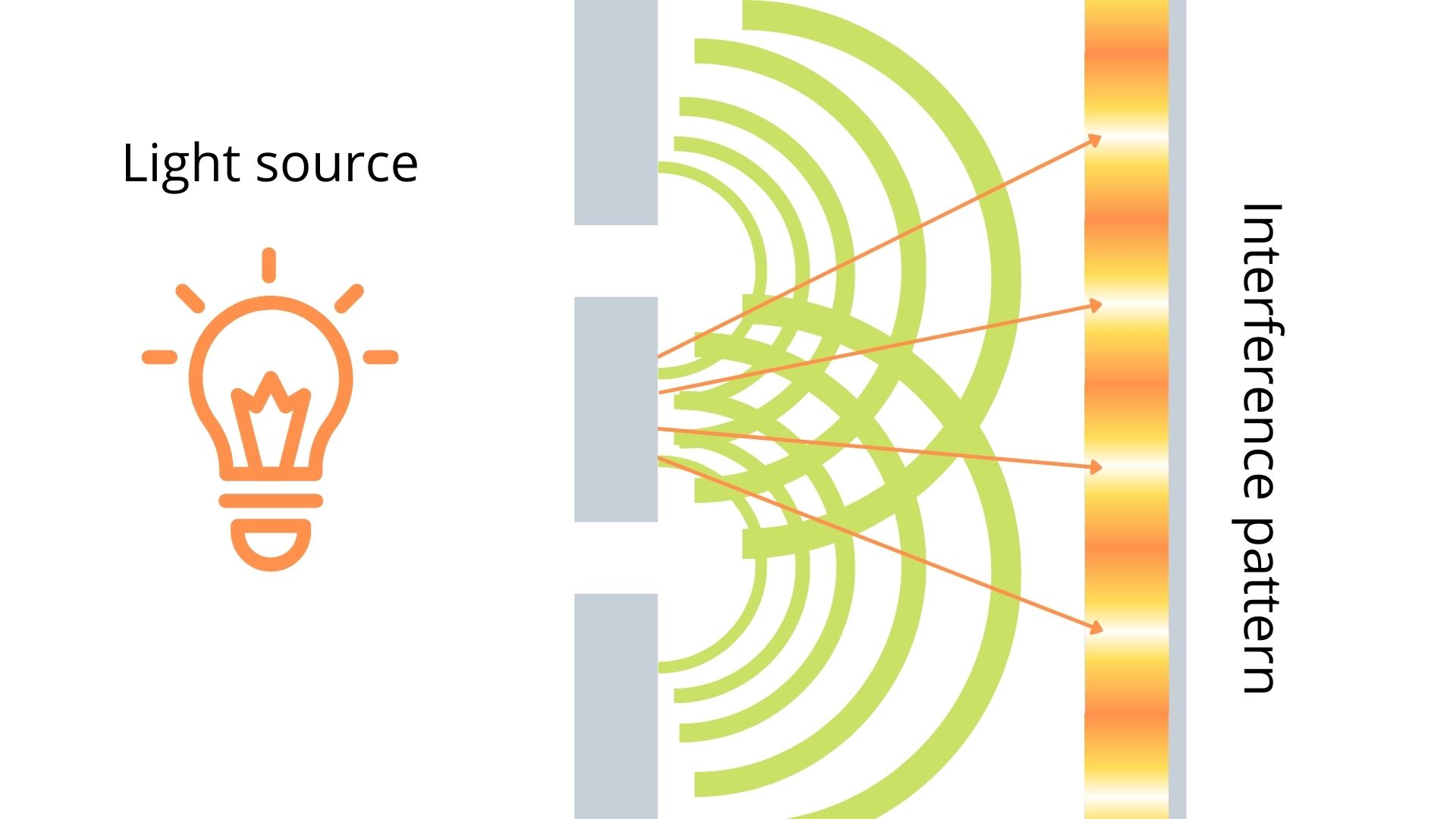
According to Stony Brook University, any wave can create an interference pattern, whether it be a sound wave, light wave or waves across a body of water. When a wave crest hits a wave trough they cancel each other out — known as destructive interference — and appear as a dark band. When a crest hits a crest they amplify each other — known as constructive interference — and appear as a bright band. The combination of dark and bright bands is known as an interference pattern and can be seen on the sensor screen opposite the slits.
This interference pattern was the evidence Young needed to determine that light was a wave and not a particle as Newton had suggested.
But that is not the whole story. Light is a little more complicated than that, and to see how strange it really is we also need to understand what pattern a particle would make on a sensor field.
Particle patterns
If you were to carry out the same experiment and fire grains of sand or other particles through the slits, you would end up with a different pattern on the sensor screen. Each particle would go through a slit end up in a line in roughly the same place (with a little bit of spread depending on the angle the particle passed through the slit).
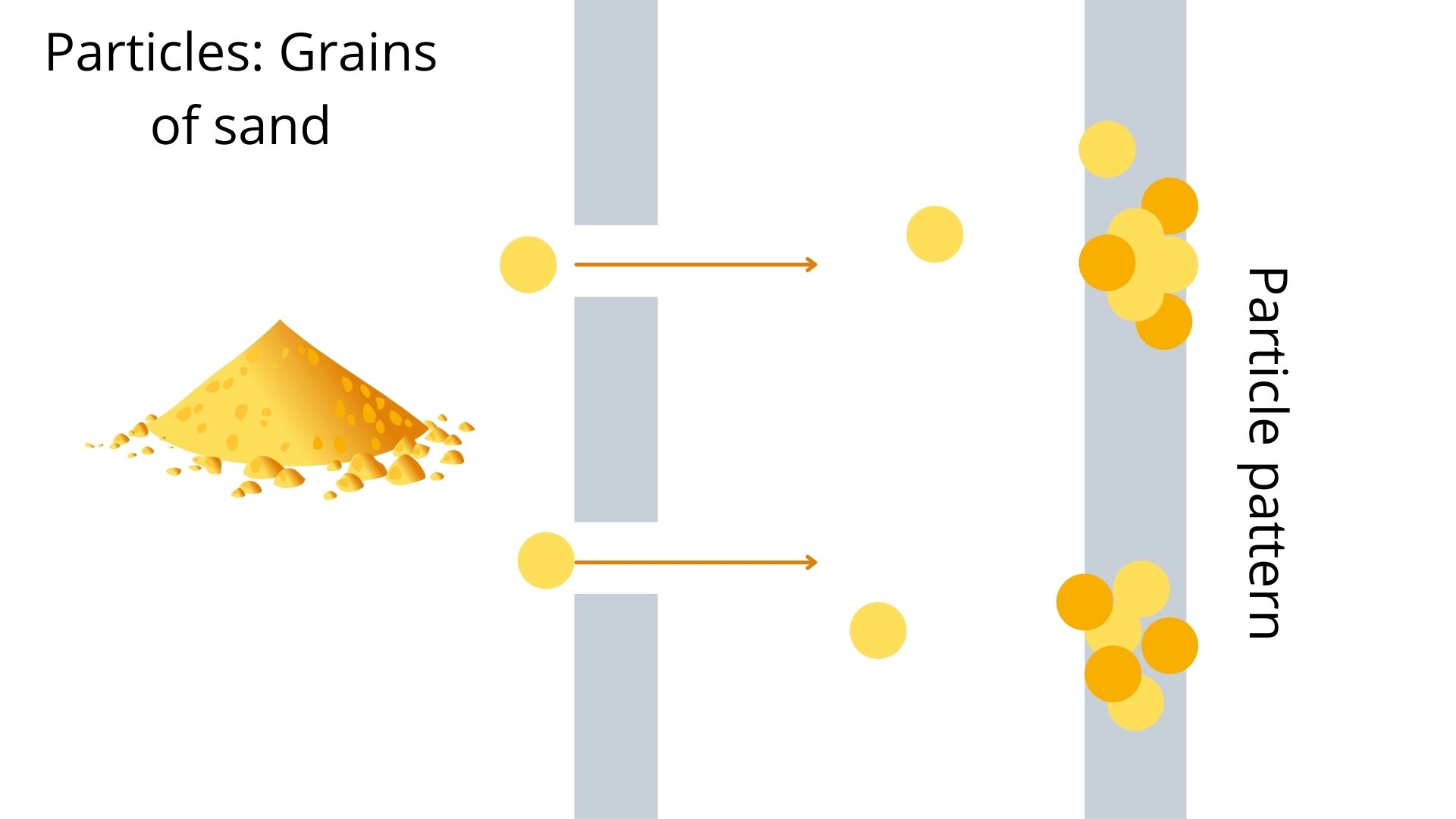
Clearly, waves and particles produce a very different pattern, so it should be easy to distinguish between the two right? Well, this is where the double-slit experiment gets a little strange when we try and carry out the same experiment but with tiny particles of light called photons. Enter the realm of quantum mechanics.
Double-slit experiment: Quantum mechanics
The smallest constituent of light is subatomic particles called photons. By using photons instead of grains of sand we can carry out the double-slit experiment on an atomic scale.
If you block off one of the slits, so it is just a single-slit experiment, and fire photons through to the sensor screen, the photons will appear as pinprick points on the sensor screen, mimicking the particle patterns produced by sand in the previous example. From this evidence, we could suggest that photons are particles.
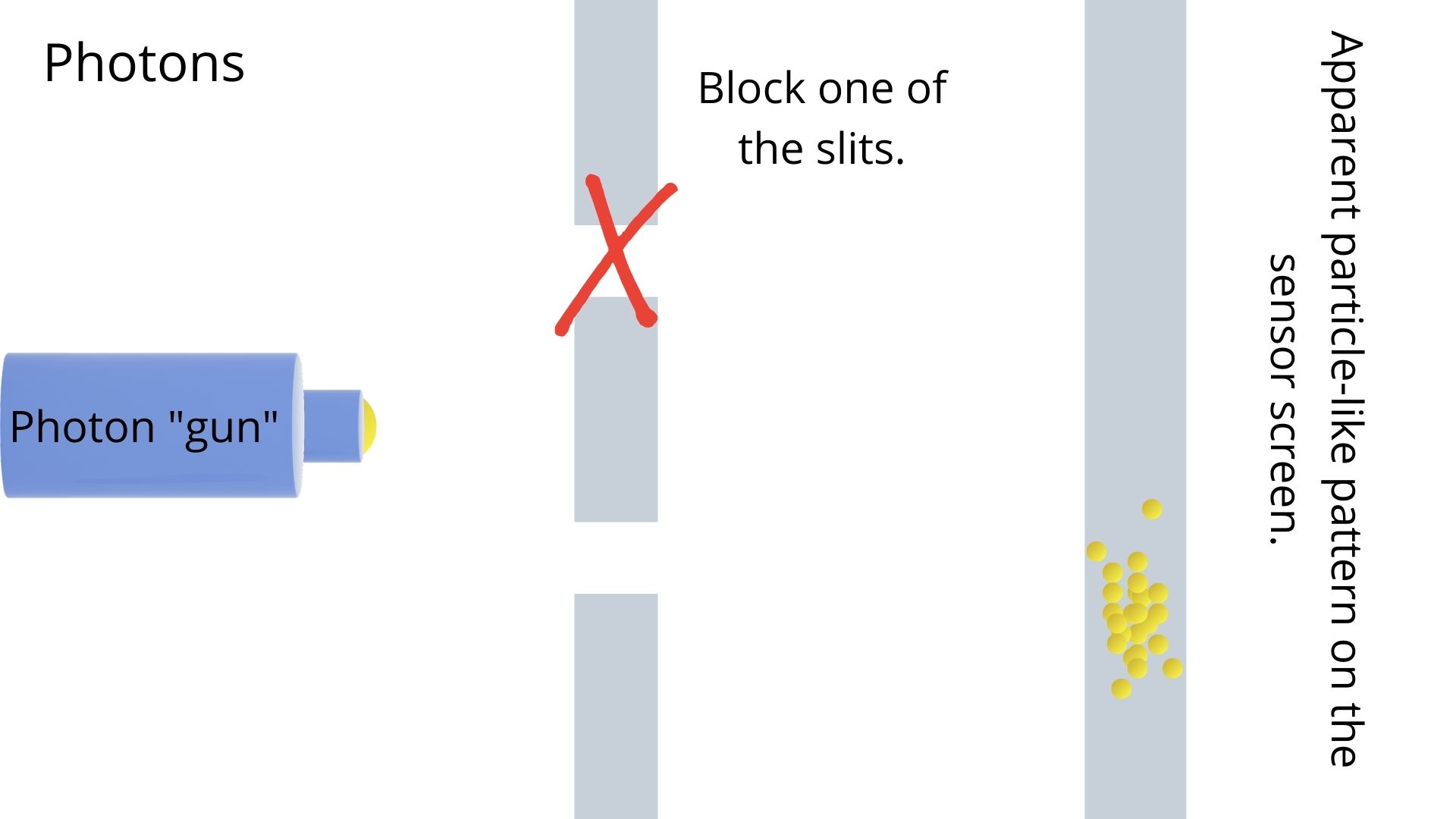
Now, this is where things start to get weird.
If you unblock the slit and fire photons through both slits, you start to see something very similar to the interference pattern produced by waves in the light example. The photons appear to have gone through the pair of slits acting like waves.
But what if you launch photons one by one, leaving enough time between them that they don't have a chance of interfering with each other, will they behave like particles or waves?
At first, the photons appear on the sensor screen in a random scattered manner, but as you fire more and more of them, an interference pattern begins to emerge. Each photon by itself appears to be contributing to the overall wave-like behavior that manifests as an interference pattern on the screen — even though they were launched one at a time so that no interference between them was possible.
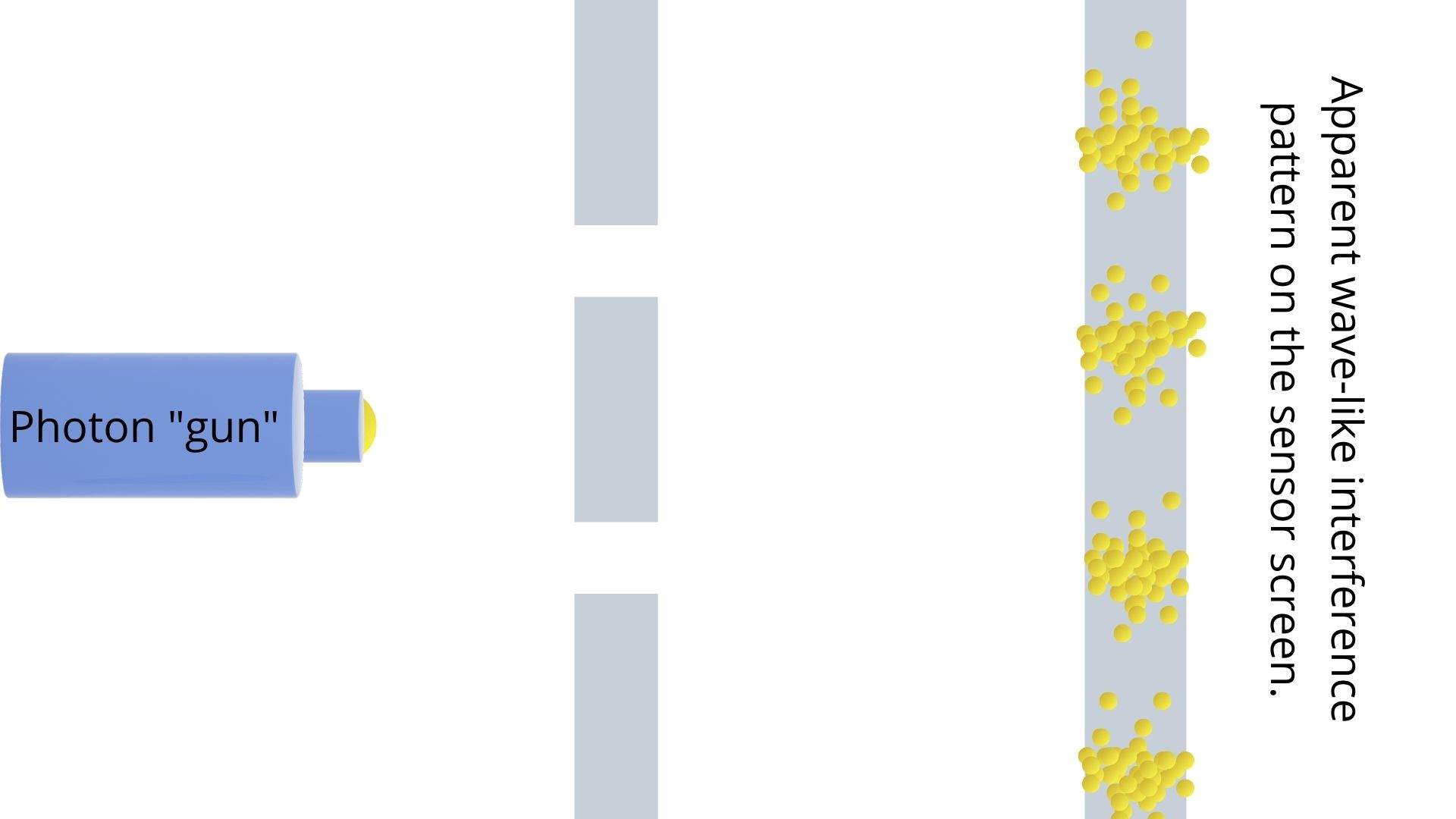
It's almost as though each photon is "aware" that there are two slits available. How? Does it split into two and then rejoin after the slit and then hit the sensor? To investigate this, scientists set up a detector that can tell which slit the photon passes through.
Again, we fire photons one at a time at the slits, as we did in the previous example. The detector finds that about 50% of the photons have passed through the top slit and about 50% through the bottom, and confirms that each photon goes through one slit or the other. Nothing too unusual there.
But when we look at the sensor screen on this experiment, a different pattern emerges.
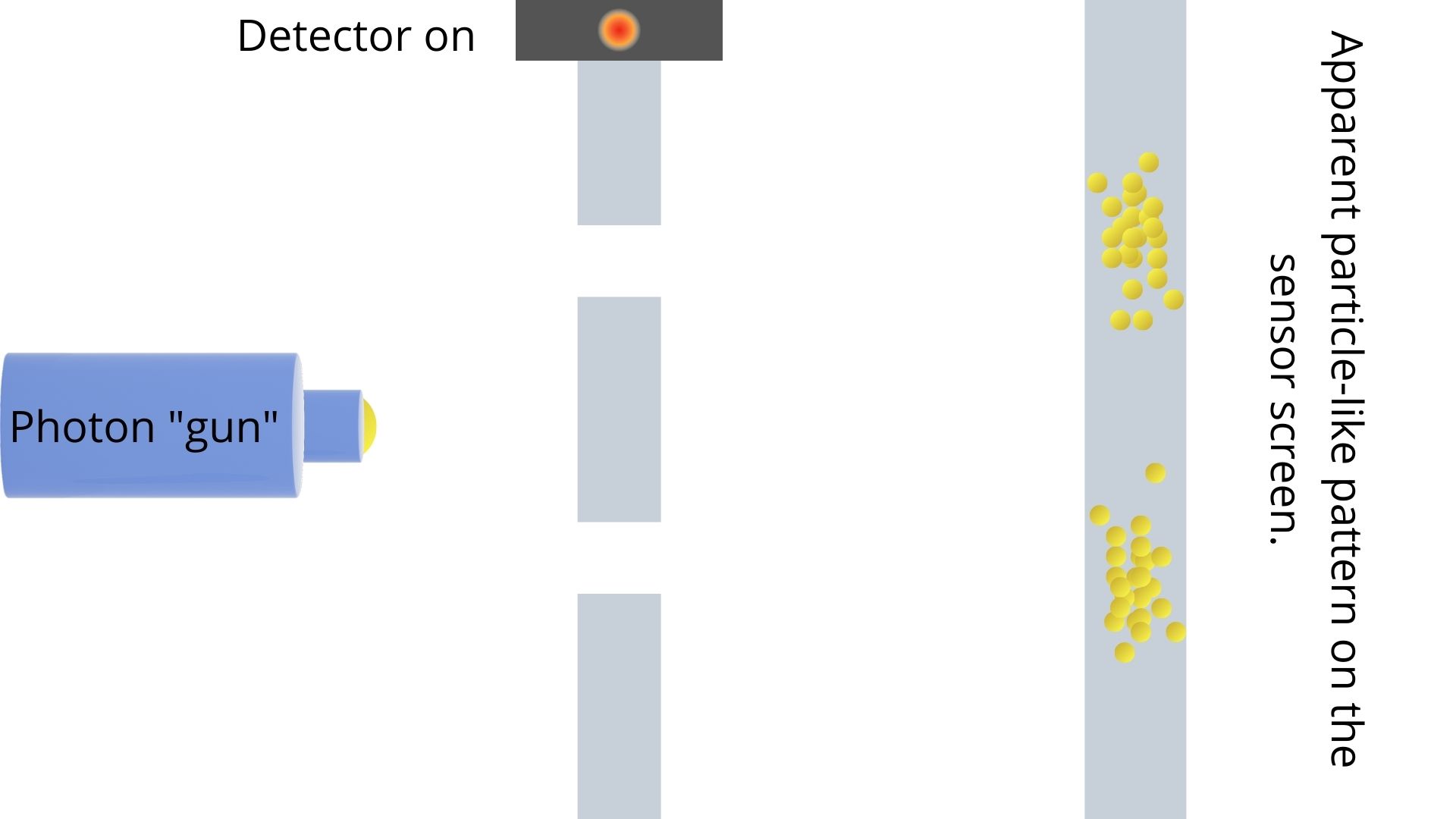
This pattern matches the one we saw when we fired particles through the slits. It appears that monitoring the photons triggers them to switch from the interference pattern produced by waves to that produced by particles.
If the detection of photons through the slits is apparently affecting the pattern on the sensor screen, what happens if we leave the detector in place but switch it off? (Shh, don't tell the photons we're no longer spying on them!)
This is where things get really, really weird.
Same slits, same photons, same detector, just turned off. Will we see the same particle-like pattern?
No. The particles again make a wave-like interference pattern on the sensor screen.
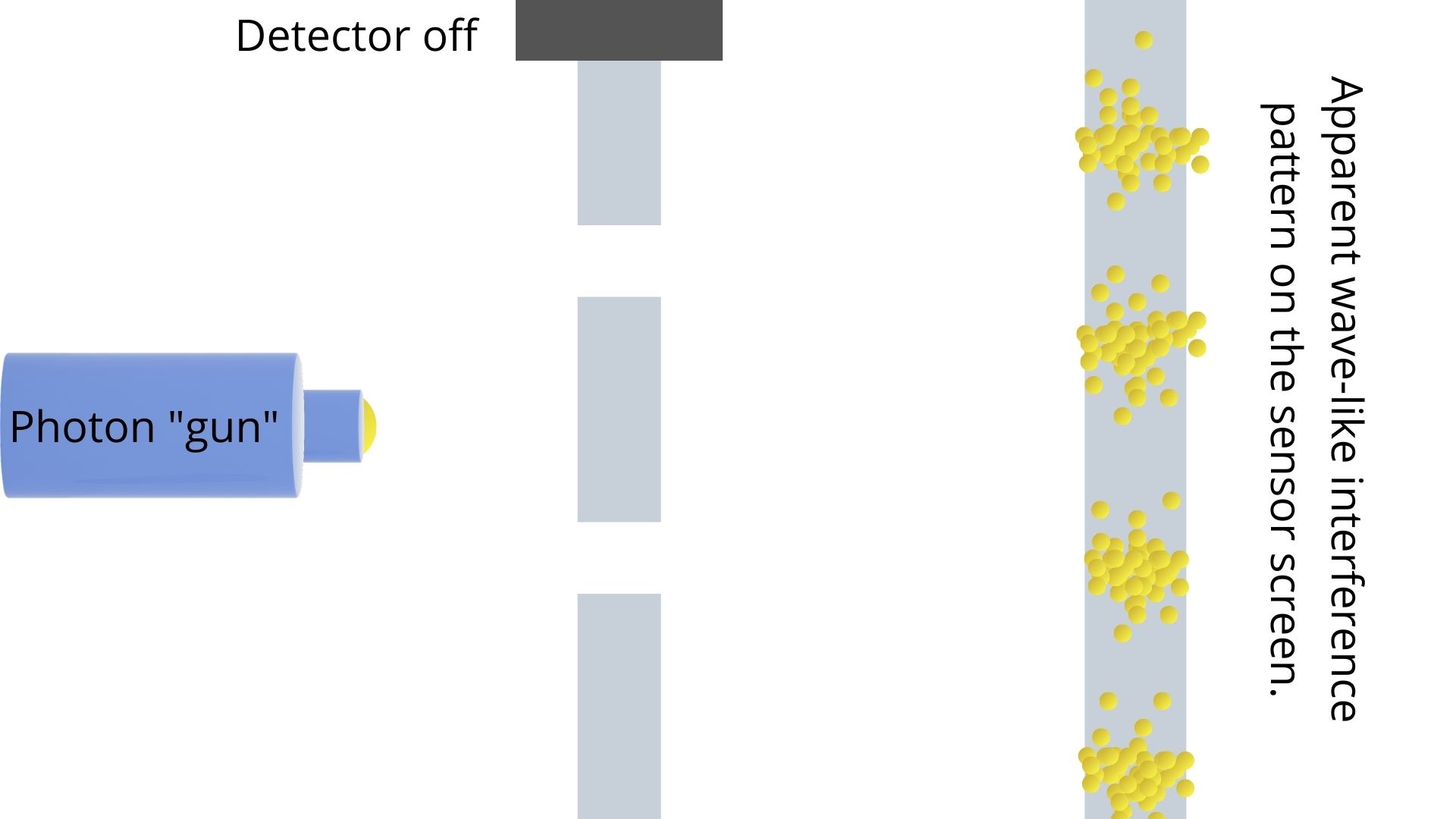
The atoms appear to act like waves when you're not watching them, but as particles when you are. How? Well, if you can answer that, a Nobel Prize is waiting for you.
In the 1930s, scientists proposed that human consciousness might affect quantum mechanics. Mathematician John Von Neumann first postulated this in 1932 in his book "The Mathematical Foundations of Quantum Mechanics." In the 1960s, theoretical physicist, Eugene Wigner conceived a thought experiment called Wigner's friend — a paradox in quantum physics that describes the states of two people, one conducting the experiment and the observer of the first person, according to science magazine Popular Mechanics. The idea that the consciousness of a person carrying out the experiment can affect the result is knowns as the Von Neumann–Wigner interpretation.
Though a spiritual explanation for quantum mechanic behavior is still believed by a few individuals, including author and alternative medicine advocate Deepak Chopra, a majority of the science community has long disregarded it.
As for a more plausible theory, scientists are stumped.
Furthermore —and perhaps even more astonishingly — if you set up the double-slit experiment to detect which slit the photon went through after the photon has already hit the sensor screen, you still end up with a particle-type pattern on the sensor screen, even though the photon hadn't yet been detected when it hit the screen. This result suggests that detecting a photon in the future affects the pattern produced by the photon on the sensor screen in the past. This experiment is known as the quantum eraser experiment and is explained in more detail in this informative video from Fermilab.
We still don't fully understand how exactly the particle-wave duality of matter works, which is why it is regarded as one of the greatest mysteries of quantum mechanics.
History of the double-slit experiment
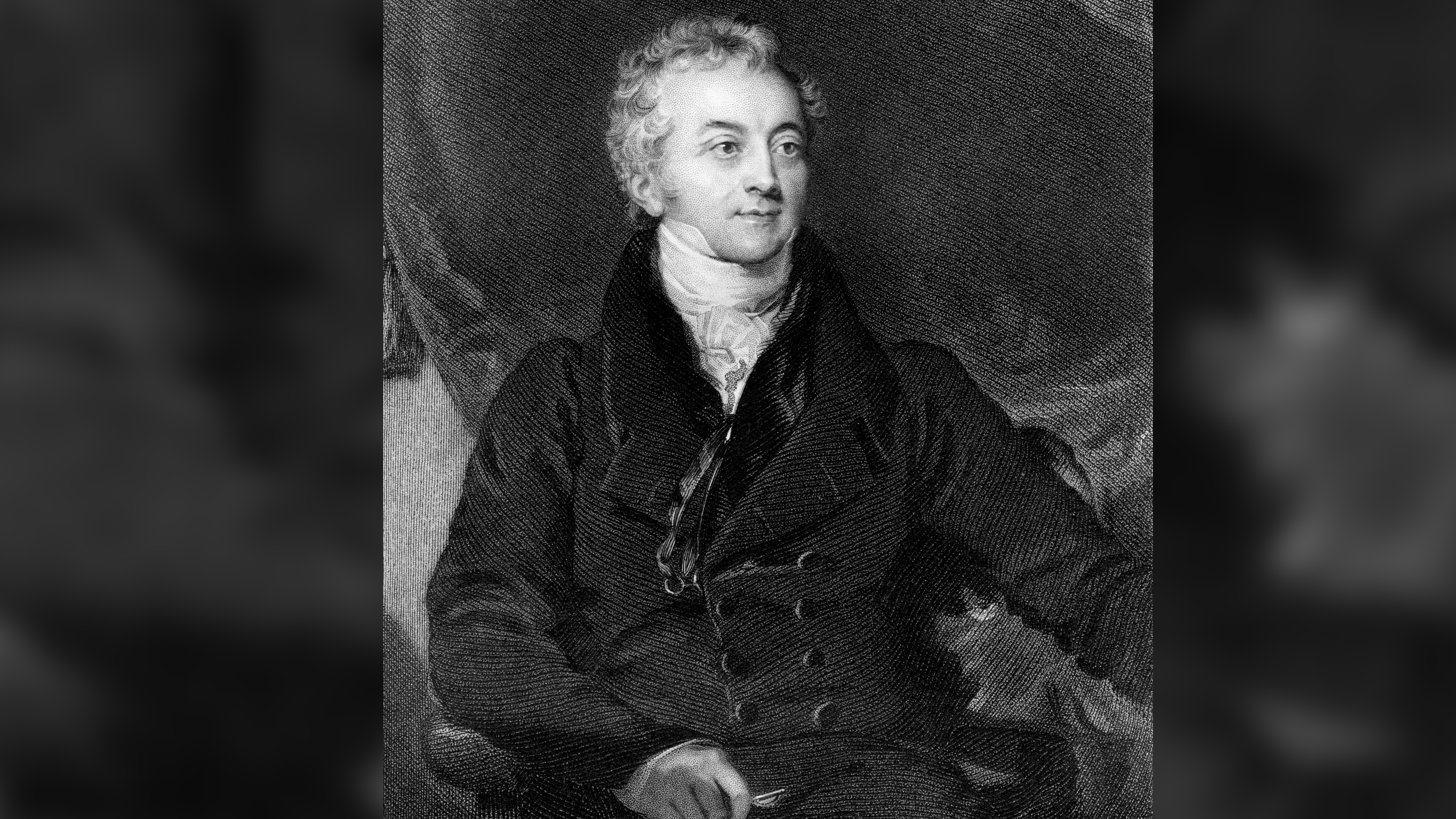
The first version of the double-slit experiment was carried out in 1801 by British polymath Thomas Young, according to the American Physical Society (APS). His experiment demonstrated the interference of light waves and provided evidence that light was a wave, not a particle.
Young also used data from his experiments to calculate the wavelengths of different colors of light and came very close to modern values.
Despite his convincing experiment that light was a wave, those who did not want to accept that Isaac Newton could have been wrong about something criticized Young. (Newton had proposed the corpuscular theory, which posited that light was composed of a stream of tiny particles he called corpuscles.)
According to APS, Young wrote in response to one of the critics, "Much as I venerate the name of Newton, I am not therefore obliged to believe that he was infallible."
Since the development of quantum mechanics, physicists now acknowledge light to be both a particle and a wave.
Additional resources
Explore the double-slit experiment in more detail with this article from the University of Cambridge, which includes images of electron patterns in a double-slit experiment. Discover the true nature of light with Canon Science Lab. Read about fragments of energy that are not waves or particles — but could be the fundamental building blocks of the universe — in this article from The Conversation. Dive deeper into the two-slit experiment in this article published in the journal Nature.
Bibliography
Grangier, Philippe, Gerard Roger, and Alain Aspect. "Experimental evidence for a photon anticorrelation effect on a beam splitter: a new light on single-photon interferences." EPL (Europhysics Letters) 1.4 (1986): 173.
Thorn, J. J., et al. "Observing the quantum behavior of light in an undergraduate laboratory." American Journal of Physics 72.9 (2004): 1210-1219.
Ghose, Partha. "The central mystery of quantum mechanics." arXiv preprint arXiv:0906.0898 (2009).
Aharonov, Yakir, et al. "Finally making sense of the double-slit experiment." Proceedings of the National Academy of Sciences 114.25 (2017): 6480-6485.
Peng, Hui. "Observations of Cross-Double-Slit Experiments." International Journal of Physics 8.2 (2020): 39-41.
Join our Space Forums to keep talking space on the latest missions, night sky and more! And if you have a news tip, correction or comment, let us know at: community@space.com.
Get the Space.com Newsletter
Breaking space news, the latest updates on rocket launches, skywatching events and more!

Daisy Dobrijevic joined Space.com in February 2022 having previously worked for our sister publication All About Space magazine as a staff writer. Before joining us, Daisy completed an editorial internship with the BBC Sky at Night Magazine and worked at the National Space Centre in Leicester, U.K., where she enjoyed communicating space science to the public. In 2021, Daisy completed a PhD in plant physiology and also holds a Master's in Environmental Science, she is currently based in Nottingham, U.K. Daisy is passionate about all things space, with a penchant for solar activity and space weather. She has a strong interest in astrotourism and loves nothing more than a good northern lights chase!
